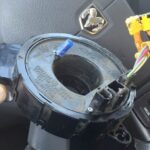Exhaust gas recirculation (EGR) is a crucial emission control system used in internal combustion engines to minimize nitrogen oxide (NOx) emissions. This article delves into the mechanics of EGR, its applications, benefits, drawbacks, and the importance of proper lubrication.
How Does EGR Work?
The EGR system works by redirecting a measured amount of exhaust gas back into the engine’s intake system. This exhaust gas, after being cooled, mixes with the incoming air and fuel mixture. This dilution reduces the peak combustion temperature within the engine cylinders. Lowering this temperature significantly reduces the formation of harmful NOx emissions.
EGR System Applications
EGR systems are widely implemented in both gasoline and diesel engines across various applications. From passenger cars and heavy-duty trucks to buses and even stationary engines used in power plants and industrial settings, EGR plays a vital role in controlling NOx emissions.
The Importance of EGR
EGR is a proven technology for mitigating air pollution from vehicles and industrial processes. By reducing NOx emissions, EGR contributes to cleaner air and a healthier environment. This makes EGR a critical component in meeting stringent emission regulations.
EGR Drawbacks and Considerations
While EGR offers significant environmental benefits, it also presents some drawbacks. The lower combustion temperatures resulting from EGR can lead to incomplete fuel combustion, increasing particulate matter (PM) emissions, especially in diesel engines. This often necessitates the use of a Diesel Particulate Filter (DPF) to capture the excess soot.
Additionally, EGR can contribute to accelerated engine oil degradation and increase soot accumulation in the oil. This can lead to deposit buildup on engine components like valves, affecting engine performance and longevity. EGR can also slightly reduce engine power output due to the diluted air-fuel mixture.
EGR and Lubrication Needs
Maintaining the EGR system and the engine requires high-quality lubricants. These lubricants are essential to protect EGR components from wear and tear caused by soot and to combat the accelerated oil degradation associated with EGR operation. Proper lubrication ensures the long-term efficiency and reliability of the EGR system.

